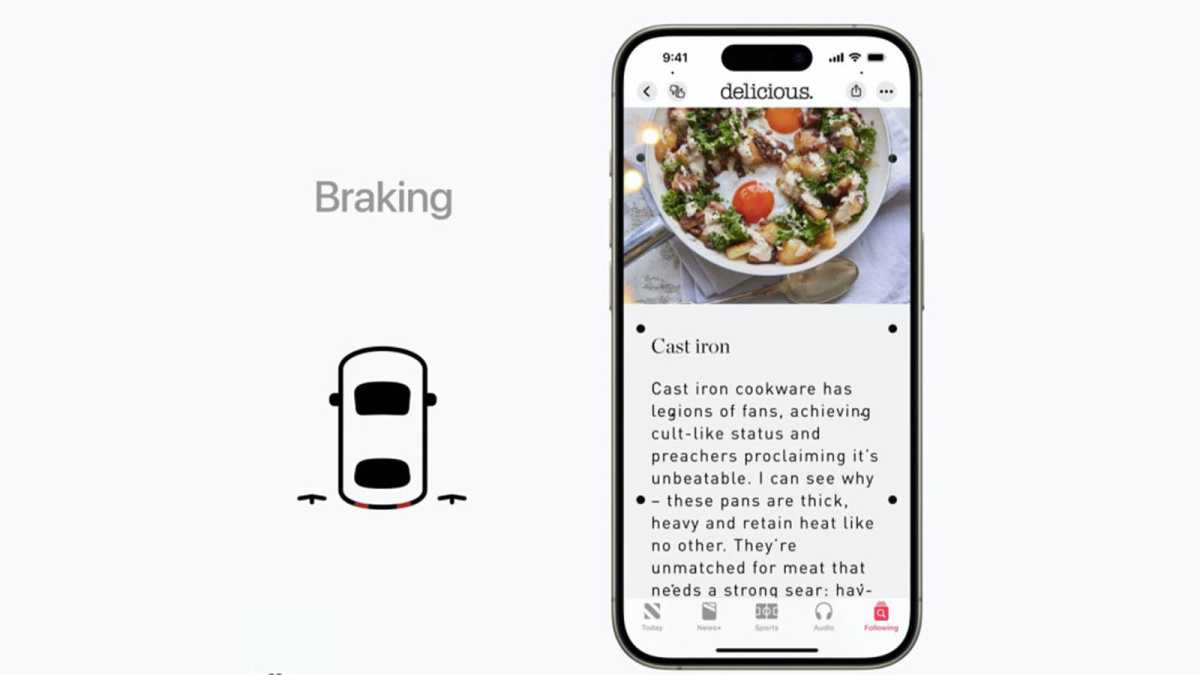Travelling has always been a bit of a nightmare for me. Thanks to motion sickness, childhood trips always began with a ceremonial loading-up of the car with plastic bags, water and kitchen roll, and continued as stop-start affairs, as my parents repeatedly and frantically swerved into lay-bys so I could run out and vomit into a hedge.
There’s no end to the exotic and far-flung locations in which I’ve tried to find a bin for a sick bag.
In adulthood, things have improved. Boats are still a gamble, but I can usually make it through a car, plane or train journey. But that’s only if I sit perfectly still and don’t try to read, which makes work trips difficult and full of useless downtime.
That’s why Vehicle Motion Cues, a new accessibility feature coming to iOS 18, could prove life-changing for me – and not just for me. Around one-third of the population is susceptible to motion sickness, making it difficult to read or do other tasks while on the move.
Vehicle Motion Cues should allow a passenger in a moving vehicle to look at their iPhone or iPad without feeling queasy.

Apple
The feature adds animated dots along the sides of the phone’s display that match real-time changes in motion, to help minimise the sensory conflict you experience while reading in a moving vehicle. It should have the same calming effect on motion sickness as looking out of a window while travelling.
Sensors in the device can recognise when you’re in a moving vehicle to enable it automatically.
The Vehicle Motion Cues feature was not announced on 10 June’s WWDC along with the top-line iOS 18 features. In fact, Apple announced it in mid-May, alongside a number of other accessibility features, including eye tracking and music haptics.
I missed it at the time – too distracted figuring out how I can stop Apple Intelligence from sending me emails written as poems – but it’s now my most anticipated feature.
iOS 18 will be launched in the autumn along with the iPhone 16. Find out about the new features you’ll get in the update, and which iPhones will support it.
Another under-the-radar feature that isn’t designed for travel per se but could help in this respect is Eye Tracking. This uses the front-facing camera and lets you navigate your iPhone or iPad with only your eyes, including buttons, swipes and gestures.
Want to read more about WWDC and its announcements? Try these articles:
- See all of Craig Federighi’s funniest moments, from this WWDC and previous events.
- Apple Intelligence won’t be coming to watchOS – and for our wearables specialist, that’s a reason not to buy.


